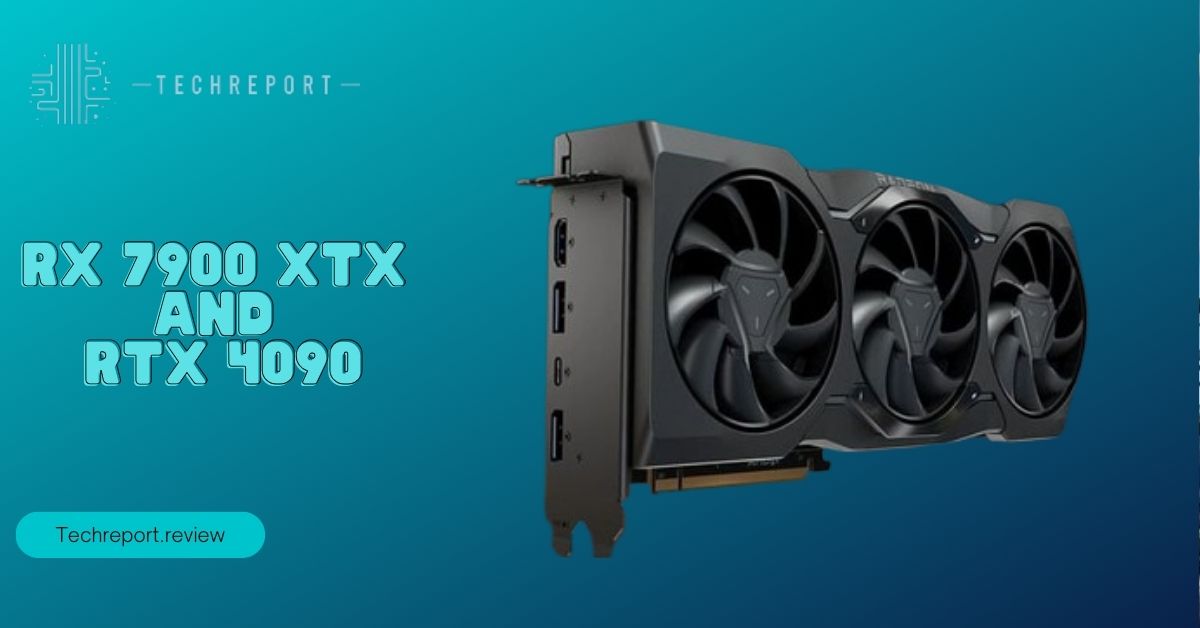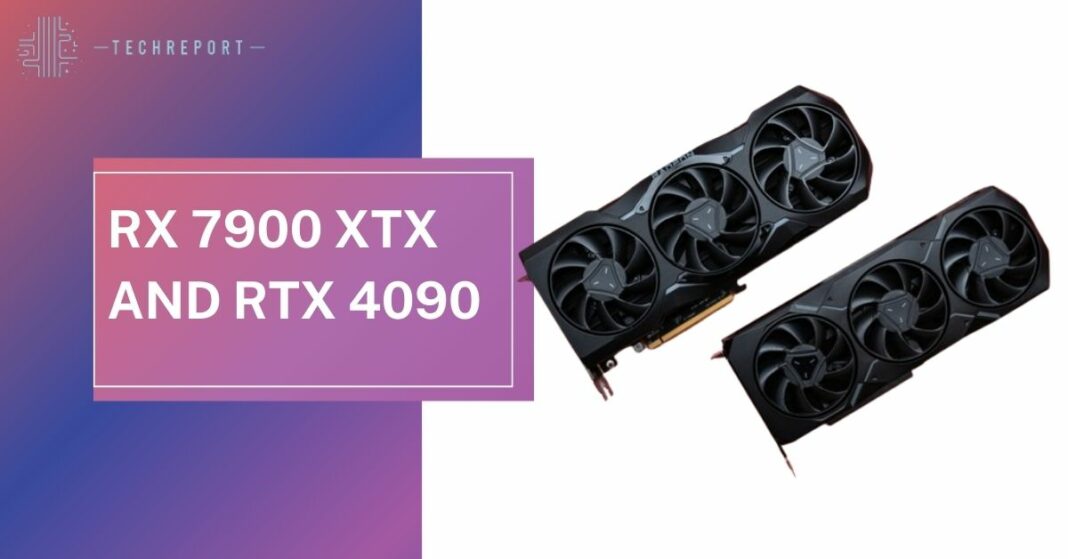In the dynamic landscape of graphics cards, two behemoths have emerged—the AMD Radeon RX 7900 XTX and the Nvidia GeForce RTX 4090. As of November 30, 2023, these powerhouses stand at the forefront, offering unparalleled performance for gaming enthusiasts and professionals alike.
This blog undertakes a comprehensive exploration of their capabilities, dissecting the nuances to assist users in making informed decisions.
In the ever-evolving market, understanding the distinctions between these graphics cards becomes crucial.
Whether you’re a gamer seeking the ultimate gaming experience or a professional with demanding computational tasks, the comparison between the RX 7900 XTX and RTX 4090 provides valuable insights, guiding you towards the optimal choice for your specific needs.
Also Read: Reset Galaxy Watch
Release Dates
The AMD Radeon RX 7900 XTX made its debut on December 13, 2022, marking a significant entry into the graphics card arena.
On the other hand, the Nvidia GeForce RTX 4090 took the stage earlier, being released on October 12, 2022.
As of today, November 30, 2023, it’s essential to recognize the timeline of these releases. The RX 7900 XTX, unveiled just over a year ago, has had time to establish its presence and receive user feedback.
Meanwhile, the RTX 4090, introduced slightly earlier, has had a bit more time to permeate the market. This temporal context sets the stage for a nuanced comparison, taking into account the advancements and user experiences over the past year.
Key Specifications Comparison

In the realm of high-performance graphics, understanding the core specifications is paramount. Below is a detailed table highlighting the key specifications of the AMD Radeon RX 7900 XTX and the Nvidia GeForce RTX 4090:
| Feature | AMD Radeon RX 7900 XTX | Nvidia GeForce RTX 4090 |
| Architecture | RDNA3 | Ada Lovelace |
| Compute Units | 96 | 16384 |
| Stream Processors | 6144 | 5120 Tensor Cores |
| Memory | 24GB GDDR6 | 24GB GDDR6X |
| Boost Clock | Up to 2.3GHz | Up to 2.52GHz |
| Floating-Point Performance | Up to 61 teraflops | Up to 83 teraflops |
These specifications provide a snapshot of the underlying capabilities of each graphics card. The architecture, compute units, and other features contribute to the overall performance and efficiency of these GPUs. As we delve deeper into this comparison, these numbers will serve as the foundation for evaluating their real-world implications.
Also Read: Fortnite Split-Screen Guide
Performance Comparison
When it comes to gaming performance, both the AMD Radeon RX 7900 XTX and the Nvidia GeForce RTX 4090 showcase their prowess, albeit with some nuances.
The RTX 4090, with its superior specs, often outperforms the RX 7900 XTX in various benchmarks, demonstrating up to a 20% advantage in certain scenarios.
Despite this, it’s crucial to highlight that the RX 7900 XTX holds its ground as a formidable contender. With commendable overall performance, it stands as a powerful option for users seeking a graphics card that delivers excellent results across a spectrum of gaming experiences.
As we delve deeper into specific benchmarks and real-world gaming scenarios, a clearer picture will emerge, allowing users to weigh the trade-offs between these two titans of the GPU market.
Feature Differences
Beyond raw performance metrics, the AMD Radeon RX 7900 XTX and Nvidia GeForce RTX 4090 diverge in terms of unique features, each bringing distinctive elements to the user experience.
Chiplet Design (RX 7900 XTX):
The RX 7900 XTX boasts a chiplet design, harnessing the power of multiple smaller chips. This innovative approach offers potential advantages in power efficiency and scalability, addressing the demands of high-end graphics processing. Users may find this design appealing for its potential benefits in terms of performance and energy efficiency.
Smart Access Memory (RX 7900 XTX):
Exclusive to AMD, Smart Access Memory technology enhances the interaction between the RX 7900 XTX and compatible Ryzen processors. This allows the graphics card to access the full memory bandwidth of Ryzen CPUs, potentially optimizing performance, especially in games optimized for AMD’s Ryzen architecture. For users with AMD CPU configurations, this feature adds a layer of synergy that can contribute to an improved gaming experience.
Reflex Technology (RTX 4090):
The RTX 4090 introduces Reflex technology, a feature designed to reduce input latency in games. This is particularly beneficial for competitive gamers who demand the fastest response times. By minimizing latency, Reflex technology aims to provide a more responsive gaming experience, catering to the needs of users engaged in high-stakes, competitive gaming scenarios.
Understanding these unique features allows users to consider not only raw performance but also the added value each graphics card brings to their computing and gaming experiences.
Price Comparison
In the realm of high-end graphics cards, understanding the price dynamics is crucial for users making informed decisions. As of November 30, 2023, let’s delve into the pricing details of the AMD Radeon RX 7900 XTX and the Nvidia GeForce RTX 4090:
AMD Radeon RX 7900 XTX:
The RX 7900 XTX comes with a Manufacturer’s Suggested Retail Price (MSRP) of $999.
Nvidia GeForce RTX 4090:
On the other hand, the RTX 4090 commands a premium with an MSRP of $1,599.
The cost difference between these graphics cards is notable, and users must weigh this against their specific requirements and budget constraints. While the RTX 4090 comes at a higher price, it’s essential to consider the value it brings in terms of raw performance, additional features, and potential benefits like Nvidia’s Reflex technology.
For users on a budget or those who find the features of the RX 7900 XTX aligning with their needs, the $999 MSRP presents an attractive proposition. However, for enthusiasts seeking peak performance and willing to invest in the additional features offered by the RTX 4090, the higher price tag may be justified.
Ultimately, the price comparison provides users with a key factor to consider, aligning their investment with their expectations and requirements for a high-end graphics card.
Also Read: PS5 Game Sharing Guide
In Crux
In concluding this comprehensive comparison between the AMD Radeon RX 7900 XTX and the Nvidia GeForce RTX 4090, let’s recap the key points that emerged from our exploration
The RTX 4090 showcases superior gaming performance, often outpacing the RX 7900 XTX in benchmarks.
The RX 7900 XTX offers a chiplet design, while the RTX 4090 introduces Reflex technology. Smart Access Memory is an exclusive feature benefiting AMD users.
The RX 7900 XTX comes with a competitive MSRP of $999, whereas the RTX 4090 commands a premium at $1,599.
Considering these factors, our recommendation depends on your specific needs and budget:
If you’re a gamer seeking the absolute best performance and are willing to invest in additional features, the RTX 4090 is the superior choice.
However, if you are mindful of your budget or find the features of the RX 7900 XTX aligning with your needs, it remains an excellent option, offering a balance of power and affordability.
Ultimately, the best graphics card for you hinges on your individual priorities. This comparison aims to empower you with the information needed to make a well-informed decision tailored to your gaming or professional requirements.
How much did you like Our Detailed RX 7900 XTX and RTX 4090: A 2023 Comparison”? Review Also, please share these Blogs with your friends on social media.
Related Blogs
- Is iPhone 14 Worth the Hype
- Unblock Banned Apps
- Best Cheap VPN Services
- Curved or Flat: Which TV Should You Buy?
FAQs about RX 7900 XTX and RTX 4090
How does Smart Access Memory technology benefit AMD users with the RX 7900 XTX?
Smart Access Memory technology, exclusive to AMD, enhances the interaction between the RX 7900 XTX and compatible Ryzen processors. This technology enables the graphics card to access the full memory bandwidth of Ryzen CPUs, potentially optimizing performance. This is particularly beneficial in games optimized for AMD's Ryzen architecture, providing users with a cohesive and optimized gaming experience.
What is Reflex technology, and how does it enhance the gaming experience with the RTX 4090?
Reflex technology, a feature introduced with the RTX 4090, focuses on reducing input latency in games. This technology is especially advantageous for competitive gamers who prioritize the fastest possible response times. By minimizing latency, Reflex enhances the gaming experience, offering users a more responsive and precise gameplay, crucial in competitive gaming scenarios.
Considering the price difference, is the RTX 4090's higher cost justified?
The RTX 4090 comes with a premium price tag, with an MSRP of $1,599 compared to the RX 7900 XTX's $999. The justification for this higher cost lies in the RTX 4090's superior gaming performance, additional features like Reflex technology, and the overall value it brings to users seeking peak performance and cutting-edge technologies.
What factors should users consider when deciding between the RX 7900 XTX and RTX 4090?
When making a decision between these graphics cards, users should weigh factors such as their budget, specific gaming or professional requirements, and the value they place on additional features. While the RTX 4090 excels in raw performance and unique technologies, the RX 7900 XTX offers a compelling balance of power and affordability, catering to users with varied needs and considerations.


























